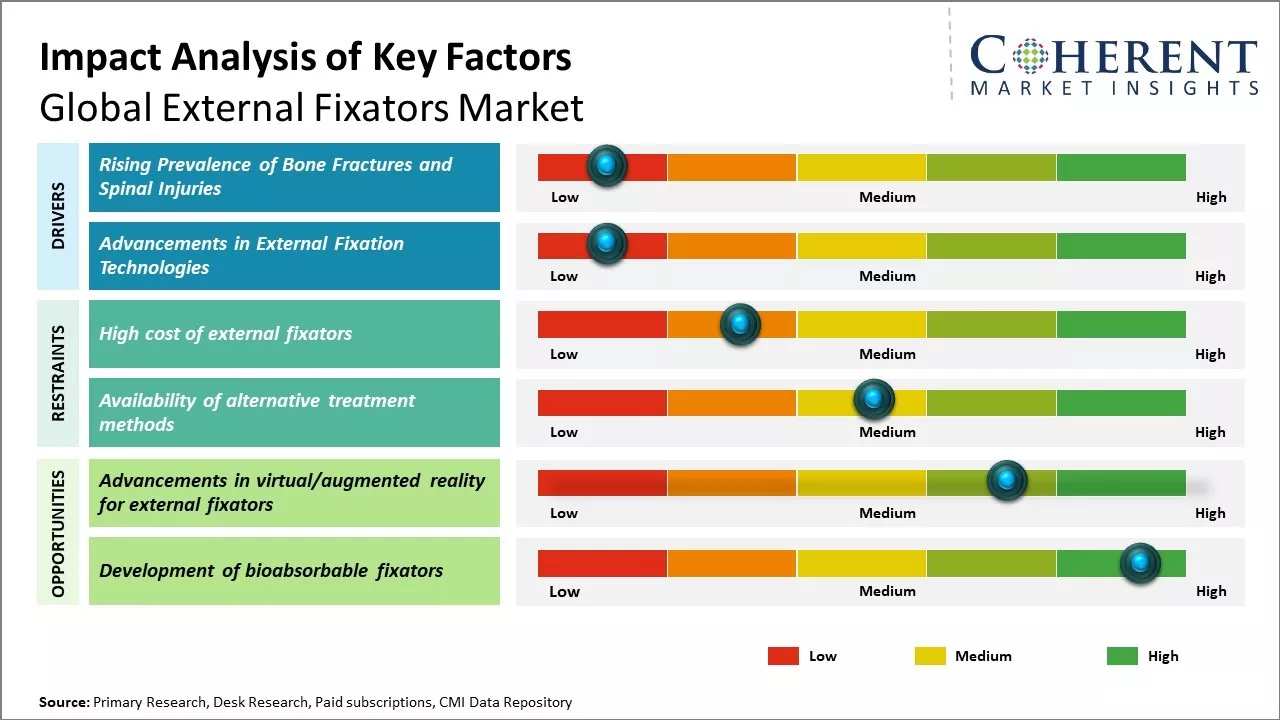The global external fixators market is estimated to be valued at USD 2.28 Bn in 2025 and is expected to reach USD 4.10 Bn by 2032, exhibiting a compound annual growth rate (CAGR) of 8.7% from 2025 to 2032.

To learn more about this report, Request sample copy
Over the forecast period of 2025-2032, the global external fixators market is expected to witness a positive growth trend. Orthopedic surgeons are increasingly adoption external fixation devices over invasive internal fixation procedures owing to their minimal invasion and faster recovery time. Furthermore, the rising number of trauma & accident cases globally due to road accidents and sports injuries has driven the demand for external fixators in emergency stabilization of bone fractures. New product launches catering to specific bone fractures and incorporating the latest technologies to improve patient outcomes are helping companies to strengthen their market position. However, high costs of external fixators and availability of alternative treatment methods are some factors that are expected to restrain the market growth to some extent over the forecast period.
Rising Prevalence of Bone Fractures and Spinal Injuries
The prevalence of bone fractures and spinal injuries has been rising globally which is one of the major factors fueling the growth of the external fixators market. According to recent data from World Health Organization (WHO), road accidents continue to rise in developing countries due to rapid motorization and urbanization leading to more than 1.3 million deaths each year, with many resulting in bone fractures and other severe injuries requiring long immobilization. Additionally, a 2021 report from Centers of Disease Control and Prevention (CDC), over 10 million people sustain osteoporosis-related fractures annually in the U.S., out of which nearly 2 million are spinal fractures mainly caused due to age-related bone weakening.
External fixators are being increasingly used by orthopedic surgeons worldwide to treat such injuries as they allow the stabilization of fractured bones without internal fixation which helps early mobilization and weight bearing. Moreover, circular external fixators are gaining more preference for treating injuries around knees, joints, and bones as they provide 360-degree stability and better mechanical strength compared to linear and hybrid fixators. For instance, in October 2021, an article titled 'The Incidence of Fractures Among the Adult Population of Germany' reported a 14% increase in the incidence of fractures, reaching 1,014 fractures per 100,000 persons annually over the past decade. The article highlighted femoral neck fractures (120 per 100,000 persons per year), per trochanteric femoral fractures (109 per 100,000 persons per year), and distal radius fractures (106 per 100,000 persons per year) as the most common types. This rising frequency of fractures, especially among older adults, is contributing to the growing demand for external fixation surgical treatments, thereby stimulating the market growth.
Joining thousands of companies around the world committed to making the Excellent Business Solutions.
View All Our Clients